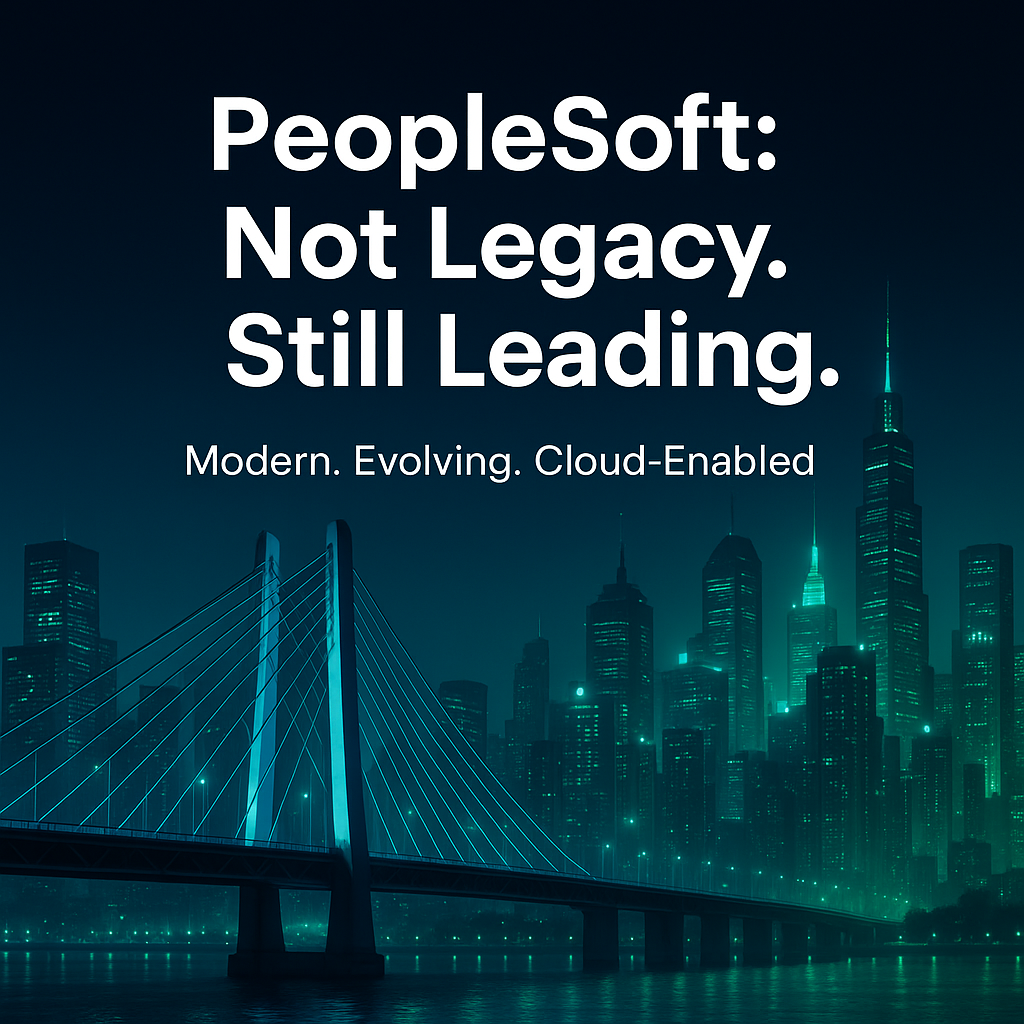Stop Calling Oracle PeopleSoft "Legacy"
Occasionally, I hear someone in IT leadership casually dismiss PeopleSoft as a “legacy” system. It’s usually framed as shorthand for “outdated,” “difficult to modernize,” or “ready for replacement.”
But here’s the truth: PeopleSoft is not legacy.
In fact, PeopleSoft is one of the most actively maintained, modernized, and adaptable ERP platforms in existence today.
Why the “Legacy” Label is Misleading
1. Continuous Investment and Innovation
Oracle continues to release PeopleTools updates, new features, and enhancements that bring PeopleSoft in line with modern cloud-native expectations. Features like Event Mapping, Drop Zones, Fluid UI, OpenSearch, and OCI/GCP integrations aren’t signs of a system stuck in the past. They’re evidence of a living, evolving platform.
2. Platform vs. Application Mindset
When you view PeopleSoft as just an “application,” it’s easy to lump it into the “legacy” bucket. But PeopleSoft is better understood as a platform; a flexible, configurable system that can be tailored, extended, and automated just like any modern SaaS product. With Infrastructure as Code, containerization, and API-driven integration, PeopleSoft can operate as a cloud-enabled platform, not a static legacy app. You can read more about this concept here: Stop Supporting. Start Enabling: Why It’s Time to Rethink PeopleSoft as a Platform
3. Proven Reliability with Modern Flexibility
PeopleSoft has decades of proven reliability at scale across industries like higher education, healthcare, and finance. Combine that with today’s DevOps practices, cloud migration paths, and advanced observability tools, and you get a system that’s both time-tested and forward-looking.
The Real Risk: Perception vs. Reality
Calling PeopleSoft “legacy” can create dangerous blind spots:
- Leaders may overlook opportunities to modernize rather than migrate.
- Teams may undervalue the platform skills they’ve built.
- Organizations may rush into costly rip-and-replace projects without recognizing the ROI potential of modernizing what they already own.
The real challenge isn’t PeopleSoft’s technology. It’s how organizations choose to position and leverage it.
Moving Forward: Reframing the Conversation
Instead of asking, “How do we replace this legacy system?” leaders should be asking:
- “How do we unlock more value from the PeopleSoft platform we already have?”
- “How do we apply cloud, automation, and AI to extend PeopleSoft’s capabilities?”
- “How do we shift our mindset from supporting an application to enabling a platform?”
Final Thought
Legacy isn’t about age. It’s about relevance. And PeopleSoft, with its continuous evolution and unmatched flexibility, is as relevant as ever.
The organizations that stop calling PeopleSoft “legacy” and start treating it as a platform for innovation will be the ones best positioned for success in the years ahead.
What do you think? Is “legacy” a fair label, or is it time we update how we talk about PeopleSoft?
